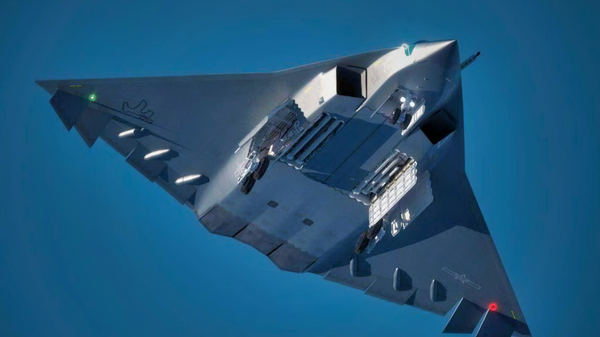This article is temporarily locked. Please come back later.
AeroXplorer is on Telegram!
Subscribe to the AeroXplorer Telegram Channel to receive aviation news updates as soon as they are released.
View Channel
YOU MAY BE INTERESTED...
Coloring the Clouds: How ANA Turned Airplanes into Art » Pentagon Alarm: China’s ‘Tailless’ 6th-Gen Fighter Prototypes Are Already Airborne » GlobalX Secures Rare Authorisation to Operate Intra-Canada Charter Flights »
Coloring the Clouds: How ANA Turned Airplanes into Art » Pentagon Alarm: China’s ‘Tailless’ 6th-Gen Fighter Prototypes Are Already Airborne » GlobalX Secures Rare Authorisation to Operate Intra-Canada Charter Flights »
Comments (5)
 Eloy
Hello there! Do you know if they make any plugins to help with Search Engine Optimization? I'm trying to get my website to rank for some targeted keywords but I'm not seeing very
good success. If you know of any please share.
Kudos! I saw similar article here: Backlinks List
Eloy
Hello there! Do you know if they make any plugins to help with Search Engine Optimization? I'm trying to get my website to rank for some targeted keywords but I'm not seeing very
good success. If you know of any please share.
Kudos! I saw similar article here: Backlinks List
630d ago • Reply
 Hudson
Hey! Do you know if they make any plugins to assist with SEO?
I'm trying to get my website to rank for some targeted keywords but I'm not seeing
very good gains. If you know of any please share.
Thanks! I saw similar blog here: GSA List
Hudson
Hey! Do you know if they make any plugins to assist with SEO?
I'm trying to get my website to rank for some targeted keywords but I'm not seeing
very good gains. If you know of any please share.
Thanks! I saw similar blog here: GSA List
630d ago • Reply
 Basil
Hello! Do you know if they make any plugins to assist with Search Engine Optimization? I'm trying
to get my blog to rank for some targeted keywords but I'm
not seeing very good success. If you know of any please
share. Appreciate it! You can read similar text here: Sklep online
Basil
Hello! Do you know if they make any plugins to assist with Search Engine Optimization? I'm trying
to get my blog to rank for some targeted keywords but I'm
not seeing very good success. If you know of any please
share. Appreciate it! You can read similar text here: Sklep online
636d ago • Reply
 Reda
Hi it's me, I am also visiting this site on a regular basis, this website is really pleasant and the people are genuinely sharing fastidious thoughts.
I saw similar here: najlepszy sklep and also here: sklep online
Reda
Hi it's me, I am also visiting this site on a regular basis, this website is really pleasant and the people are genuinely sharing fastidious thoughts.
I saw similar here: najlepszy sklep and also here: sklep online
663d ago • Reply
 inhiche
Bergmann, P, Boonen, S, Devogelaer, J, P <a href=https://enhanceyourlife.mom/>priligy 30mg tablets</a>
inhiche
Bergmann, P, Boonen, S, Devogelaer, J, P <a href=https://enhanceyourlife.mom/>priligy 30mg tablets</a>
439d ago • Reply
Add Your Comment
SHARE
TAGS
INFORMATIONAL JetblueDavid Neelemanjfknew yorkRECENTLY PUBLISHED
 US Air Force to Launch New Experimental One-Way Attack Drone Unit
In a move that signals a tectonic shift in American airpower, the U.S. Air Force is preparing to stand up its first-ever experimental unit dedicated solely to "One-Way Attack" (OWA) drones.
NEWS
READ MORE »
US Air Force to Launch New Experimental One-Way Attack Drone Unit
In a move that signals a tectonic shift in American airpower, the U.S. Air Force is preparing to stand up its first-ever experimental unit dedicated solely to "One-Way Attack" (OWA) drones.
NEWS
READ MORE »
 Pentagon Alarm: China’s ‘Tailless’ 6th-Gen Fighter Prototypes Are Already Airborne
The Pentagon’s annual 2025 China Military Power Report (CMPR), released this week, has sent a clear signal to Capitol Hill: the race for air dominance is no longer a one-horse race. For the first time, the U.S. Department of Defence has formally acknowledged the rapid progress of China’s sixth-generation fighter programs, highlighting the successful flight testing of multiple "novel tailless" stealth prototypes.
NEWS
READ MORE »
Pentagon Alarm: China’s ‘Tailless’ 6th-Gen Fighter Prototypes Are Already Airborne
The Pentagon’s annual 2025 China Military Power Report (CMPR), released this week, has sent a clear signal to Capitol Hill: the race for air dominance is no longer a one-horse race. For the first time, the U.S. Department of Defence has formally acknowledged the rapid progress of China’s sixth-generation fighter programs, highlighting the successful flight testing of multiple "novel tailless" stealth prototypes.
NEWS
READ MORE »
 No "Mate's Rates" in the Sky as Qantas Bans All Staff (Including CEO) From New A350 First Class
In a move that signals just how "ultra" Qantas intends its new ultra-long-haul product to be, the Flying Kangaroo has made a rare and dramatic policy shift: barring all staff from its upcoming Airbus A350 First Class cabins.
NEWS
READ MORE »
No "Mate's Rates" in the Sky as Qantas Bans All Staff (Including CEO) From New A350 First Class
In a move that signals just how "ultra" Qantas intends its new ultra-long-haul product to be, the Flying Kangaroo has made a rare and dramatic policy shift: barring all staff from its upcoming Airbus A350 First Class cabins.
NEWS
READ MORE »



